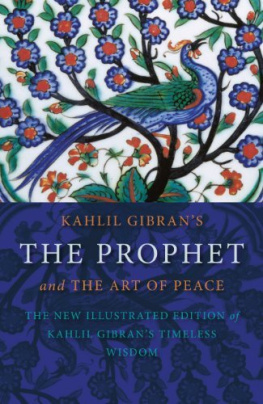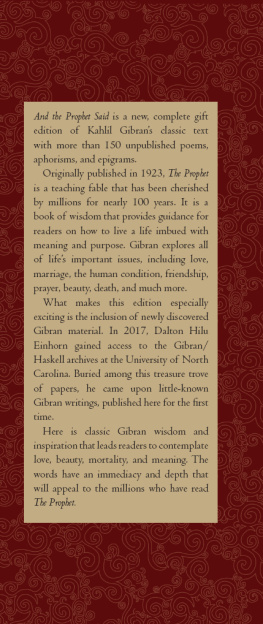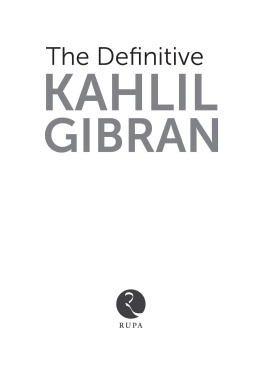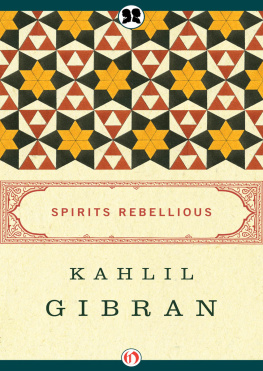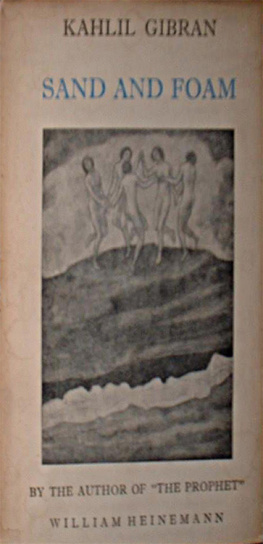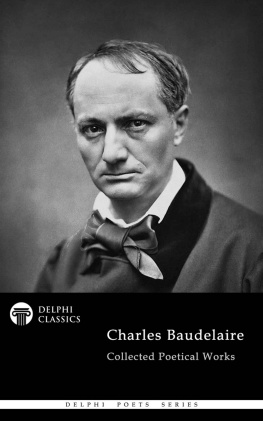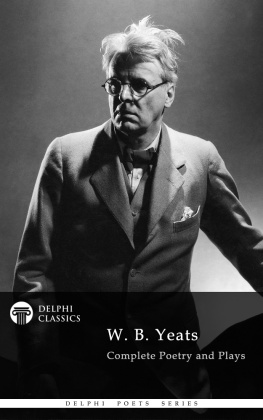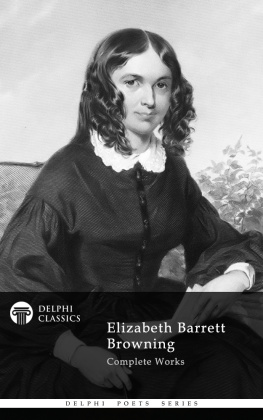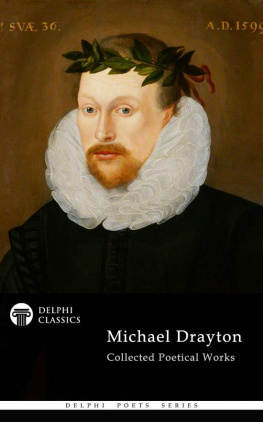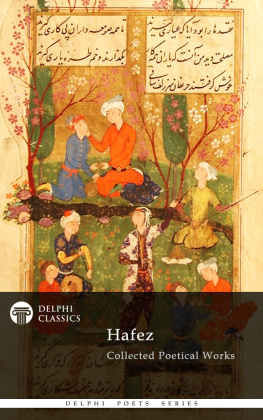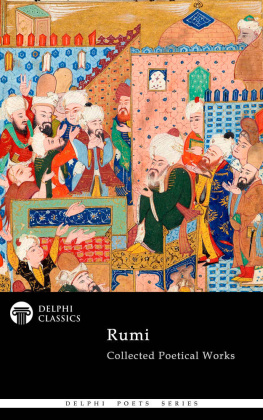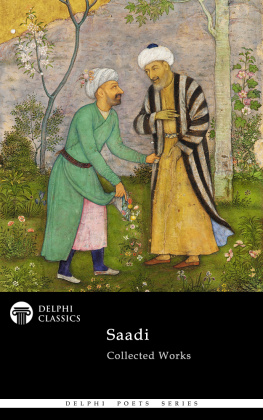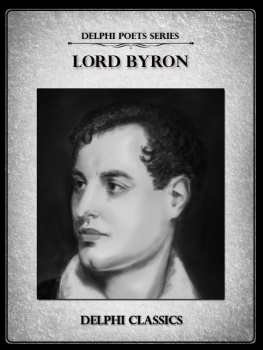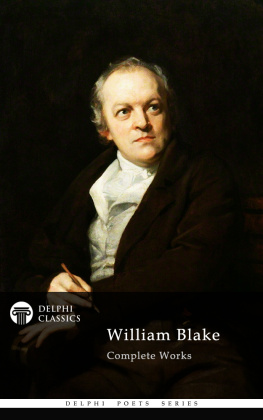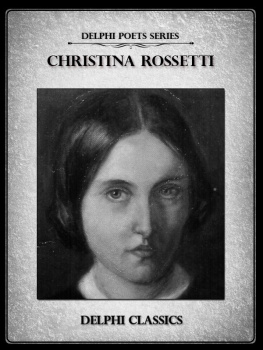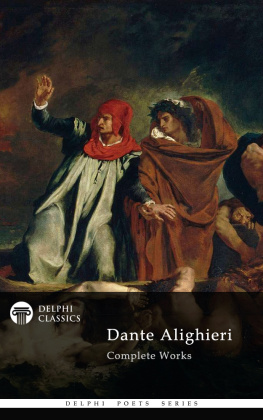

Kahlil Gibran
(1883-1931)

Contents

Delphi Classics 2017
Version 1


Kahlil Gibran

By Delphi Classics, 2017
COPYRIGHT
Kahlil Gibran - Delphi Poets Series
First published in the United Kingdom in 2017 by Delphi Classics.
Delphi Classics, 2017.
All rights reserved. No part of this publication may be reproduced, stored in a retrieval system, or transmitted, in any form or by any means, without the prior permission in writing of the publisher, nor be otherwise circulated in any form other than that in which it is published.
ISBN: 978 1 78656 214 2
Delphi Classics
is an imprint of
Delphi Publishing Ltd
Hastings, East Sussex
United Kingdom
Contact: sales@delphiclassics.com
www.delphiclassics.com
NOTE

When reading poetry on an eReader, it is advisable to use a small font size and landscape mode, which will allow the lines of poetry to display correctly.
The Life and Poetry of Kahlil Gibran

Gibran was born in the town of Bsharri in the Mount Lebanon Mutasarrifate, one of the Ottoman Empire's subdivisions, north of modern-day Lebanon.

View of Bsharri during winter

Gibran as a child, c. 1900
BRIEF INTRODUCTION: KAHLIL GIBRAN

Kahlil Gibran, the renowned Lebanese-American poet, was born into a Maronite Catholic family from the historical town of Bsharri in northern Mount Lebanon, then a semi-autonomous part of the Ottoman Empire. His mother, Kamila, daughter of a priest, was thirty when he was born; his father, Khalil, was her third husband. As a result of his familys poverty, Gibran received no formal schooling during his youth; however, priests regularly visited him and taught him about the Bible and the Arabic language. His father initially worked as an apothecary, but with gambling debts he was unable to pay, he went to work for a local Ottoman-appointed administrator. In 1891 Gibrans father was imprisoned for embezzlement and his familys property was confiscated by the authorities. With mounting debts and difficulties surrounding her, Kamila decided to follow her brother to America. Although the father was released in 1894, Kamila held fast and left for New York on 25 June 1895, taking Khalil, his younger sisters Mariana and Sultana, and his elder half-brother Peter.
The family settled in Bostons South End, at the time the second-largest Syrian-Lebanese-American community in the United States. Due to a mistake at school, he was registered as Kahlil Gibran. His mother found work as a seamstress peddler, selling lace and linens that she carried from door to door. Gibran started school in September 1895 and was placed in a special class for immigrants to learn English. He also enrolled in an art school at Denison House, a nearby settlement house, where his teachers introduced him to the avant-garde Boston artist, photographer and publisher Fred Holland Day, who encouraged and supported Gibran in his artistic endeavours.
Gibrans mother, along with his elder brother Peter, wanted him to absorb more of his own heritage rather than the Western aesthetic culture he was attracted to. Therefore, aged fifteen, Gibran returned to his homeland to study at a Maronite-run preparatory school and higher-education institute in Beirut, called al-Hikma (The Wisdom). There he established a student literary magazine with a classmate and was elected college poet. He remained there for several years before returning to Boston in 1902. Tragically, two weeks before he returned to Boston, his sister Sultana died of tuberculosis at the age of fourteen; the following year, Peter died of the same disease and his mother died of cancer. During this very difficult time, his sister Mariana supported Gibran and herself by working at a dressmakers shop.
Gibran was an accomplished artist, especially in drawing and watercolour, having attended the Acadmie Julian art school in Paris from 1908 to 1910. Adopting a symbolist and romantic style, he held his first art exhibition in 1904 at Days studio in Boston. During the exhibition, he met Mary Elizabeth Haskell, a respected headmistress ten years his senior. The two formed an important friendship that lasted the rest of the poets life. The nature of their relationship remains unclear; though some biographers believe they were lovers, yet never married as Haskells family objected; others believe their relationship was only platonic. Haskell later married Jacob Florance Minis, yet she continued to support Gibran financially and helped advance his career. She became his editor and introduced him to Charlotte Teller, a journalist, and Emilie Michel (Micheline), a French teacher, who accepted to pose for him as a model and became close friends.
Though most of Gibrans early poetry was composed in Arabic, his work published after 1918 was chiefly written in English. His first book for the publishing company Alfred A. Knopf, in 1918, was The Madman , a slim volume of aphorisms and parables written in biblical cadence, somewhere between poetry and prose. Gibran also took part in the New York Pen League, also known as the immigrant poets, alongside important Lebanese-American authors such as Ameen Rihani, Elia Abu Madi and Mikhail Naimy, a close friend and distinguished master of Arabic literature.
Gibrans most celebrated work is a book composed of twenty-six poetic essays, entitled The Prophet . It concerns the prophet, Almustafa, who has lived in the foreign city of Orphalese for twelve years and is about to board a ship that will carry him home. He is stopped by a group of people, with whom he discusses topics such as life and the human condition. The book is divided into chapters dealing with love, marriage, children, giving, eating and drinking, work, joy and sorrow, houses, clothes, buying and selling, crime and punishment, laws, freedom, reason and passion, pain, self-knowledge, teaching, friendship, religion and death.
Next page

